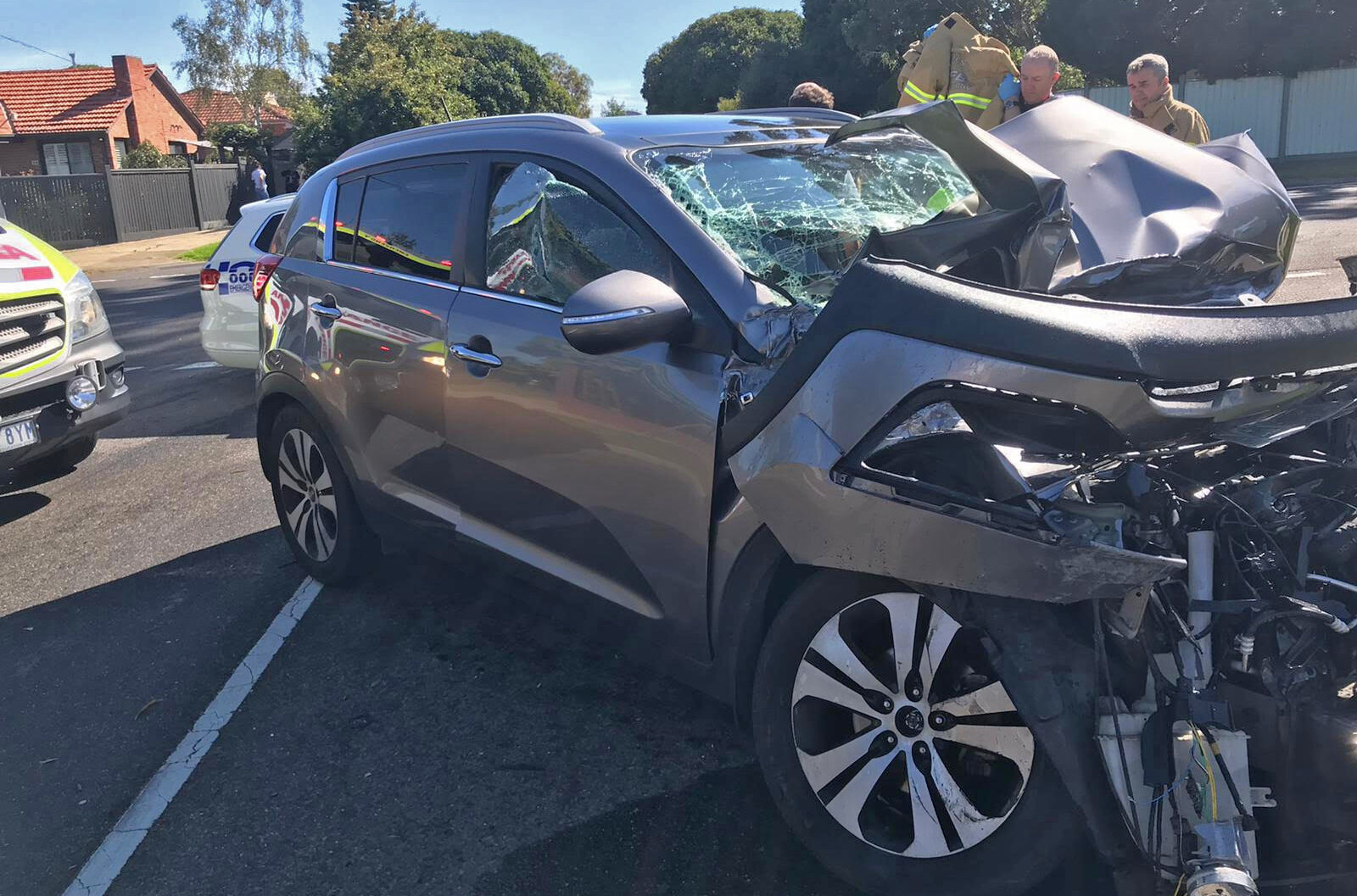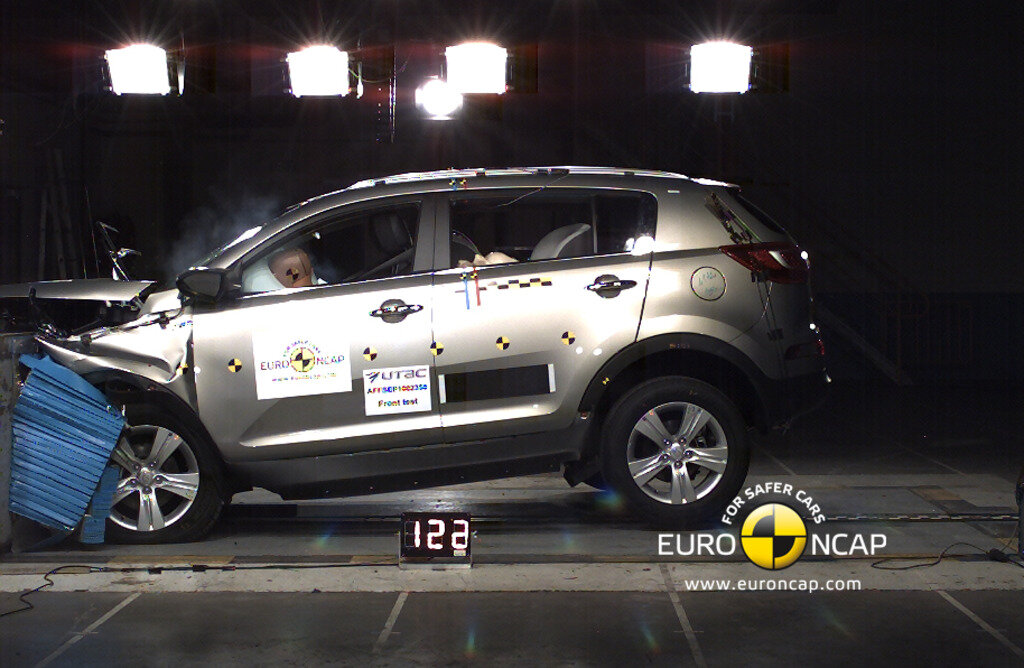The truth: When your airbags don't deploy
Hundreds of people have apparently serious crashes in modern cars - and their life-saving airbags do not deploy. What gives?
Ouch. Kia Sportage 2012, in a big crash. Altercation with a truck; Never good.
No airbag deployment. What gives?
From a friend of a fan of my reports, I got the following correspondence about a topic which could hit close to home for you, because you paid for the car expecting the damn airbags to work. Right?
My wife was involved in a serious crash in our 2012 Kia Sportage Platinum 2.4. Not a single airbag deployed during this accident.
A truck did not stop at a stop sign and collided with my wife's car, hitting the front driver’s side of her vehicle.
Keen to hear your thoughts on why the airbags did not deploy for such a significant hit. Or is it possible that there was a fault with the system?
- Fabio
I get a handful of these every year. ‘Had a crash. Didn’t get my airbags - what gives?’
So I called Fabio, because this crash is kinda interesting. It’s as if the truck peeled off the front bumper, the right guard and the bonnet. That’s a ‘hood’ in ‘Murica.
But none of the structure designed to absorb energy was engaged. Structurally, the car actually looks pretty good.
So I asked Fabio the obvious question: Is your wife okay? She suffered a few non-life-threatening injuries. Cut to the head, but skull and brains intact, importantly. Broken collar bone (probably from the rotation). But nothing requiring a stay in ICU and/or the selection of a casket - happily.
Don’t get me wrong, I’m sure for Mrs Fabio it was shocking and very painful, and might even require rehab. She’s got a piece of titanium holding her collar bone together currently. That’s not fun.
But what most people don’t get about this situation is that airbags are not designed to prevent these kinds of injuries (caused by certain types of crashes). They’re just not. They’re designed to protect ‘next-level’ injury severity. The kinds of injuries that kill you quickly.
There’s a bit in every fatal crash - a tiny little window - typically less than a tenth of a second - where your internal organs collide with your skeleton. And if they collide hard enough, critical blood vessels fail, and there’s no afterwards for you.
Or even worse, there is an afterwards and it’s a living hell that’s worse than death. I’m not exaggerating.
Having a severe brain injury is worse than death in many cases.
Pointe of impact
This is why they use crash-test dummies in R&D.
See this image on the right? That’s actual blood droplets on the centre console. The realities of a crash are hard to fathom until you’re actually in a proper one, which is why you should drive to survive >>
Engineers making cars crashworthy need to be able to relate the structural performance of the car during a crash to the motion of the dummy, so they can figure out how effectively the structure is crumpling to absorb injury and mitigate the loads on the people, and when to fire off the airbags and the pretensioners.
This is an incredibly precise process, camouflaged by the visual brutality of the crash. It’s a kind of bizarre ballet, on the boundary of life and death. Which is why I scalded the piece of shit Ford Mustang >> It couldn’t even do airbags and seatbelts properly.
Airbags need to move horrendously fast to get in place at exactly the right time (300km/h+), to provide adequate (let’s call it) ‘padding’ (even though it’s not what you’d think of as soft) during that critical window.
Airbag deployment is not risk-free. If you’re out of position, airbags can injure you seriously. So they don’t deploy them the way they hand out hard hats and vests on construction sites.
When I look at the images of that crash, I can tell the impact with the bed of the truck peeled back the bodywork, bent the bonnet over the windscreen and smashed the screen. It must have seemed very violent and brutal.
But in the context of life and death it’s not what I would categorise as a serious crash. No grim reaper. No chalk. No poker-faced cops knocking on the door to inform the next of kin - the world’s most confronting job.
Cheating death
So, no airbags, but instead, Mrs Fabio wins the biggest consolation on earth: She’s still here >>
Mrs Fabio’s airbags didn’t go off because they didn’t need to. If you crash, and there’s no airbags, and afterwards you know what day it is, where you are, and you understand that the prime minister is a useless arsehole - the car is not defective. When you get over the shock, you should write the carmaker’s structural design team a ‘thank you’ letter, in my view.
One more thing on this: Intersections - so dangerous.
They’re so damn dangerous because they seem so benign. You drive down the road, you see a stop sign, a truck approaches. Just another day behind the wheel. You’ve got the software written for what you think is about to happen.
According to the neuroscience, plans and memories are the same thing. Plans are just memories of the future, kind of. That’s why what you expect to happen seems so real. Despite the fact that it’s in the future and has not therefore yet occurred.
Effectively, you paint this picture in your head - a memory of the future. In this memory, the truck stops, and you drive on through, unscathed. Yet again. Like a thousand times before. And it seems so real.
Then, of course, at that statistically rare moment when the truck doesn’t stop, it’s fuckin’ hard to get in gear and deal with it, because your memory of the future, and the actual future, are mismatched. And it’s kinda hard to sort that out in half a second. We’re bad at that, humans.
See, change
PRO TIP: you have to train yourself that intersections are dangerous.
You have to double-check that other vehicles are obeying their give-way obligations before proceeding. They generally are, and you can get away with not doing this for years. But then, every once in a while, the hammer comes down on a loaded chamber, and you lose. Unless you check, habitually.
Actually, don’t just make it a habit, cover the brake, look right, then left and do it religiously, pathologically and obsessively. It takes one second.
So, get in the habit of checking every intersection, regardless of whether it’s a green light or not. If anything looks iffy, engage those tatics you’ve been practising: get off the gas, cover the brake, get ready to brake and/or swerve. That’s why you drive habitually, with your hands at nine and three. It’s why you’ve always got a snapshot in your head of all the traffic around you.
And if you don’t do any of this, maybe you should start doing it. It’s two seconds of caution which could save your life.

















The MG ZS is a small SUV that offers such strong value to most buyers that it should be on your shortlist be default, even when shopping for a used car. But given that no car is perfect, the price could easily distract from its drawbacks.